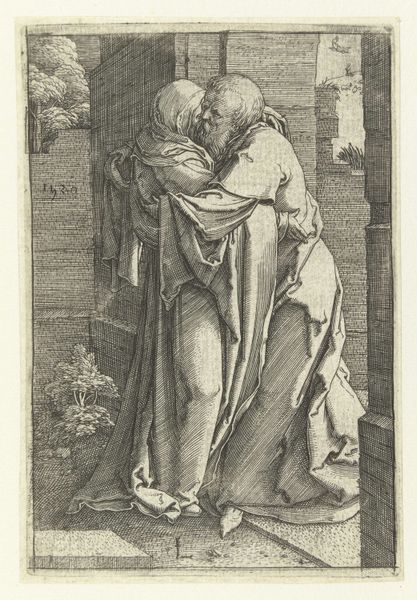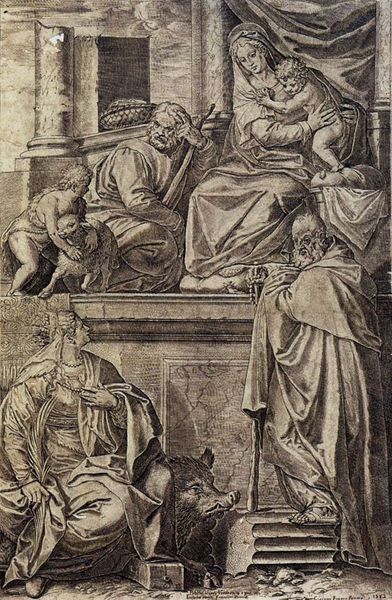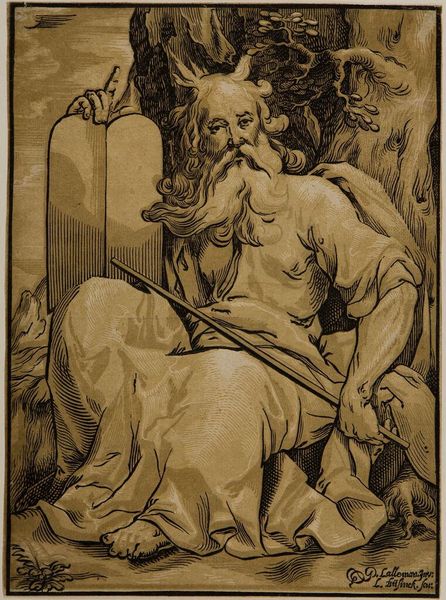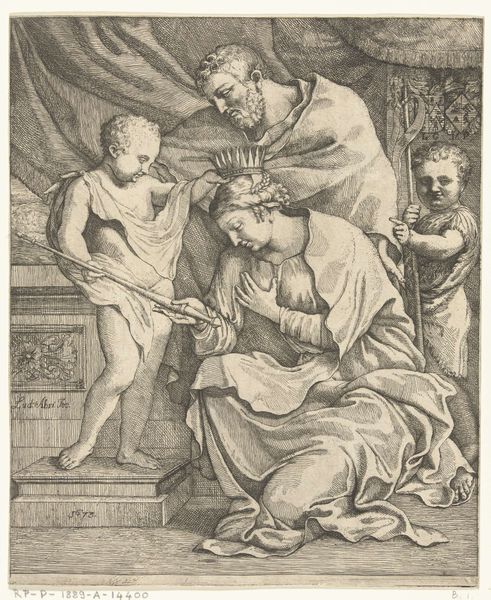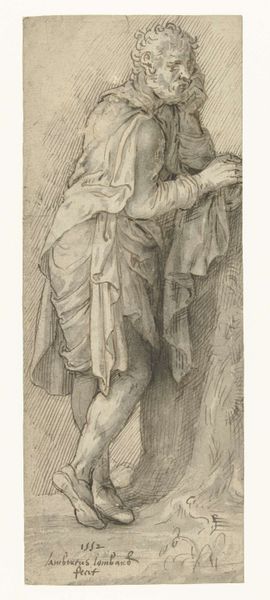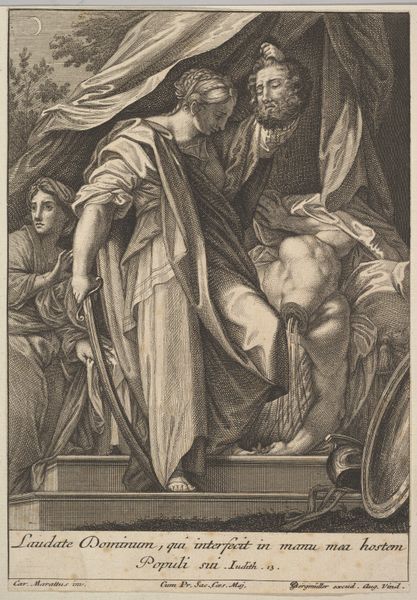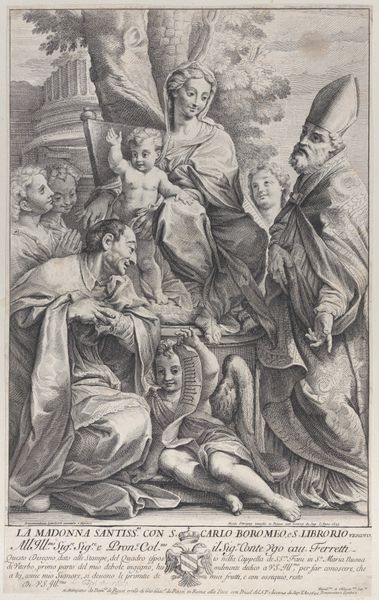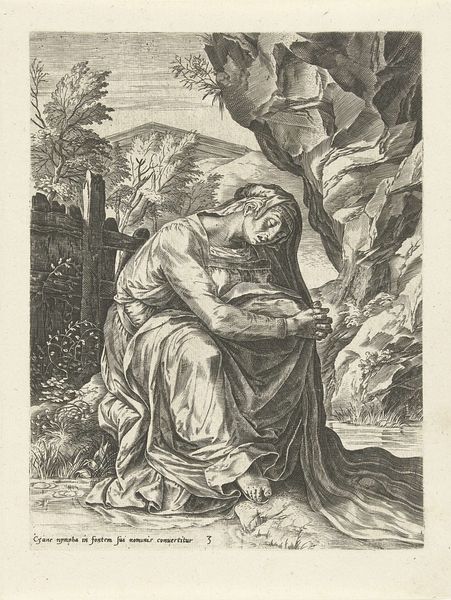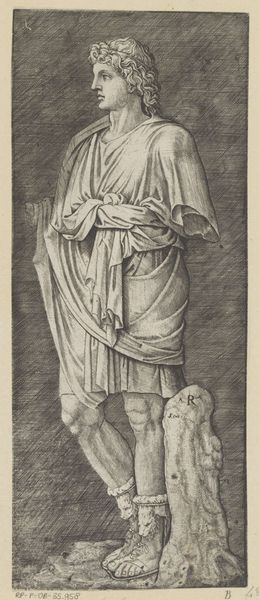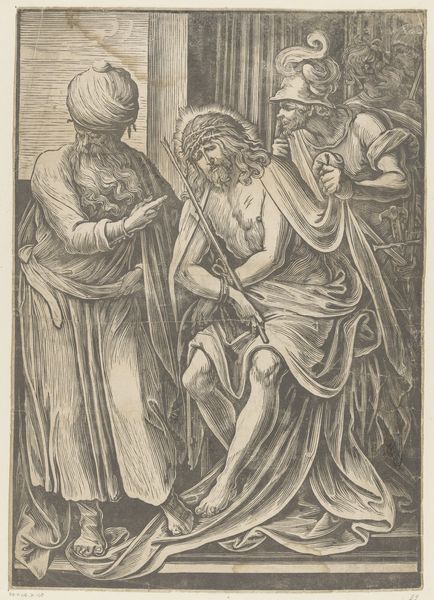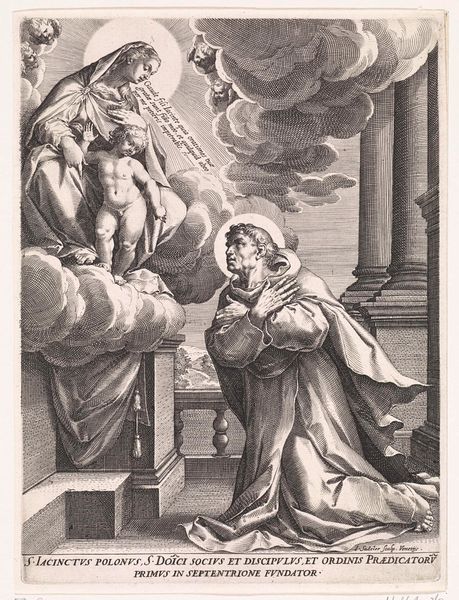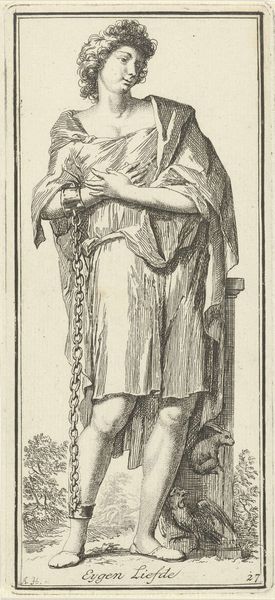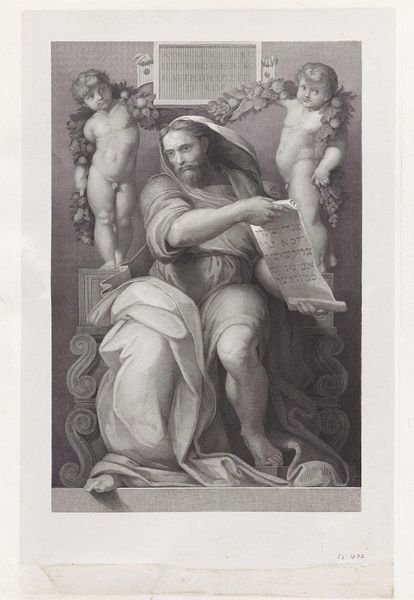
drawing, print, paper, engraving
#
drawing
# print
#
mannerism
#
figuration
#
paper
#
charcoal art
#
classicism
#
history-painting
#
italian-renaissance
#
graphite
#
engraving
Dimensions: 428 × 295 mm (sheet; trimmed to platemark)
Copyright: Public Domain
Curator: Here we have Nicolas Beatrizet's "Jeremiah," a 1547 engraving currently residing at the Art Institute of Chicago. It strikes me with an immediate somber mood, the figure's heaviness almost palpable. Editor: That's definitely the immediate read, the pose… hunched, face buried in his hand. But it also presents an interesting problem of representation. What does it mean to depict a prophet in such a posture? Where is his power in this image? Curator: Beatrizet worked during a fascinating period. Printmaking, especially engravings like this, played a key role in disseminating artistic ideas across Europe. Consider how an image like this might have helped to popularize a certain *image* of prophecy itself, one deeply inflected by suffering and introspection. The Italian Renaissance interpretation influenced how the figure and his pronouncements were perceived for centuries. Editor: I agree about the distribution factor inherent to prints, it absolutely democratized art in certain ways. Yet who had access? How did the social hierarchy of print production affect access to these concepts? The elite would likely be engaging with this on a very different level than someone who just gets to see a print tacked up in the market. It's like filtered information. Curator: Exactly, access points are crucial. We must remember that the availability of such imagery created space for both reflection and appropriation, reinforcing certain viewpoints but also challenging others. His physical depiction also feels deliberately ambiguous; we see his brawn and bulkiness, but also his exposed and weary feet. There’s a raw humanity that softens the stoic interpretation. Editor: Interesting observation. I'd further that by saying there is almost an idealization of melancholic, almost world-weary male strength, juxtaposed against the vulnerability you mention, creating a compelling yet also inherently gendered lens through which the biblical figure is received. Curator: So much to consider when looking back at this particular moment in art history. Thanks for contributing your insightful perspective, Editor. Editor: And thank you. Analyzing an artwork's cultural implications allows for richer perspectives when approaching historical and artistic themes such as these.
Comments
No comments
Be the first to comment and join the conversation on the ultimate creative platform.
